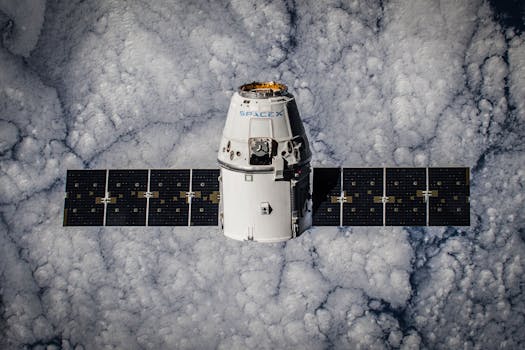The Future of Satellites: How They Will Shape Our World

The Future of Satellites: How They Will Shape Our World
Introduction to the Future of Satellites
The future of satellites is rapidly changing, with advancements in technology and new applications emerging. Satellites have been a crucial part of our daily lives, providing communication, navigation, and Earth observation services. As we move forward, the role of satellites will become even more significant, with the potential to revolutionize various industries and transform the way we live. The future of satellites is expected to be shaped by several factors, including advances in technology, increasing demand for satellite services, and the growing need for sustainable and environmentally friendly solutions.
The future of satellites starts with the integration of new technologies, such as artificial intelligence, the Internet of Things (IoT), and 5G networks. These technologies will enable satellites to provide faster, more reliable, and more secure services, paving the way for a wide range of new applications, from smart cities to autonomous vehicles. For instance, satellites will play a crucial role in the development of smart cities, providing the necessary infrastructure for efficient traffic management, waste management, and public safety.
Applications of Satellites
Satellites have a wide range of applications, including communication, navigation, Earth observation, and weather forecasting. Communication satellites provide internet connectivity, voice and video services, and broadcast television channels. Navigation satellites, such as GPS, provide location information and timing signals, enabling us to navigate the world with precision. Earth observation satellites monitor the Earth’s climate, weather patterns, and natural resources, helping us to understand and manage our planet’s resources more effectively. Weather forecasting satellites monitor weather patterns, providing critical information for predicting weather events and managing natural disasters.
In addition to these traditional applications, satellites are also being used in new and innovative ways, such as in the monitoring of climate change, the tracking of natural disasters, and the provision of emergency response services. For example, satellites are being used to monitor sea level rise, track deforestation, and predict natural disasters such as hurricanes and wildfires. The use of satellites in these applications has the potential to save lives, reduce economic losses, and promote sustainable development.
Challenges Facing the Satellite Industry
Despite the many benefits and opportunities presented by satellites, the industry also faces several challenges, including the risk of space debris, the need for sustainable and environmentally friendly solutions, and the increasing demand for satellite services. Space debris, which includes old satellites, rocket parts, and other objects in orbit, poses a significant threat to the safety and sustainability of satellite operations. The need for sustainable and environmentally friendly solutions is also becoming increasingly important, as the satellite industry seeks to reduce its carbon footprint and minimize its impact on the environment. The increasing demand for satellite services, driven by the growing need for connectivity, navigation, and Earth observation, is also a significant challenge, as it requires the development of new technologies and infrastructure to meet the demand.
To address these challenges, the satellite industry is investing in new technologies, such as reusable rockets, satellite servicing, and sustainable propulsion systems. These technologies have the potential to reduce the cost and environmental impact of satellite operations, while also improving the safety and sustainability of the industry. For instance, reusable rockets can significantly reduce the cost of launching satellites into orbit, while satellite servicing can extend the life of satellites and reduce the need for new launches.
Conclusion
In conclusion, the future of satellites is rapidly changing, with advancements in technology and new applications emerging. The integration of new technologies, such as artificial intelligence, the Internet of Things (IoT), and 5G networks, will enable satellites to provide faster, more reliable, and more secure services, paving the way for a wide range of new applications. However, the industry also faces several challenges, including the risk of space debris, the need for sustainable and environmentally friendly solutions, and the increasing demand for satellite services. To address these challenges, the satellite industry is investing in new technologies, such as reusable rockets, satellite servicing, and sustainable propulsion systems. As we move forward, it is essential to continue investing in the development of new technologies and infrastructure, while also promoting sustainable and environmentally friendly solutions, to ensure the long-term sustainability of the satellite industry.






